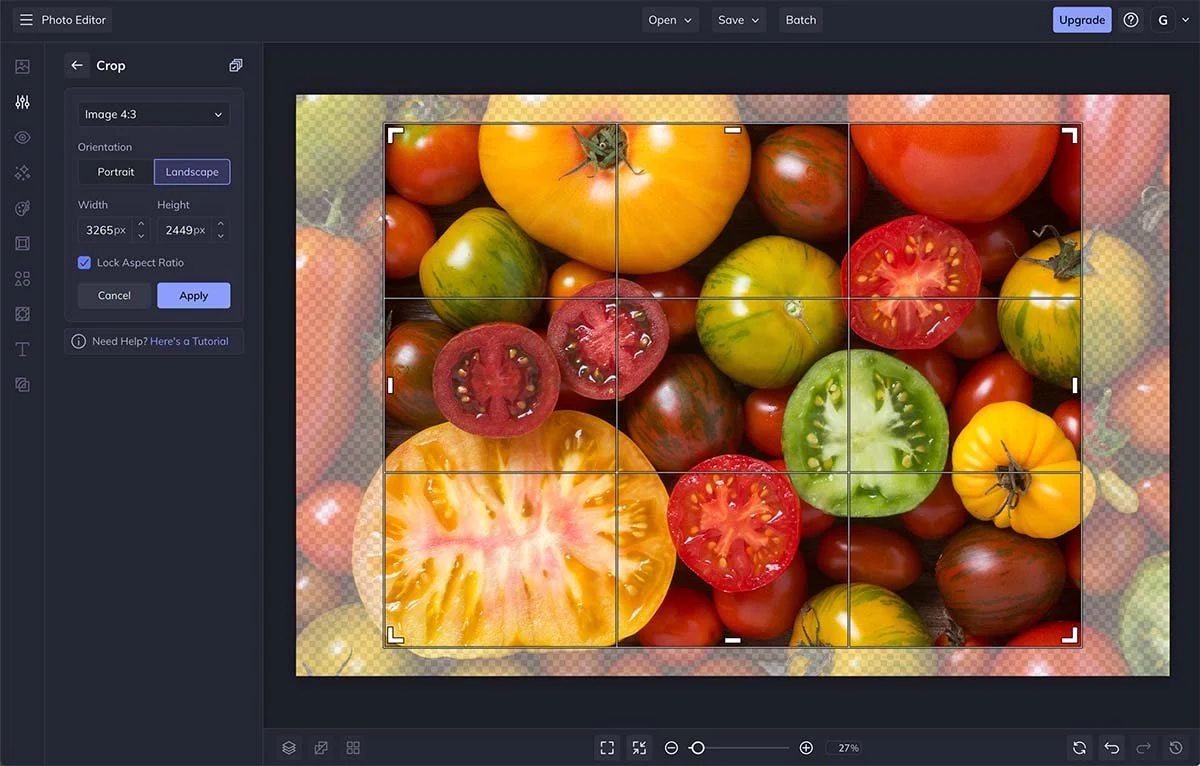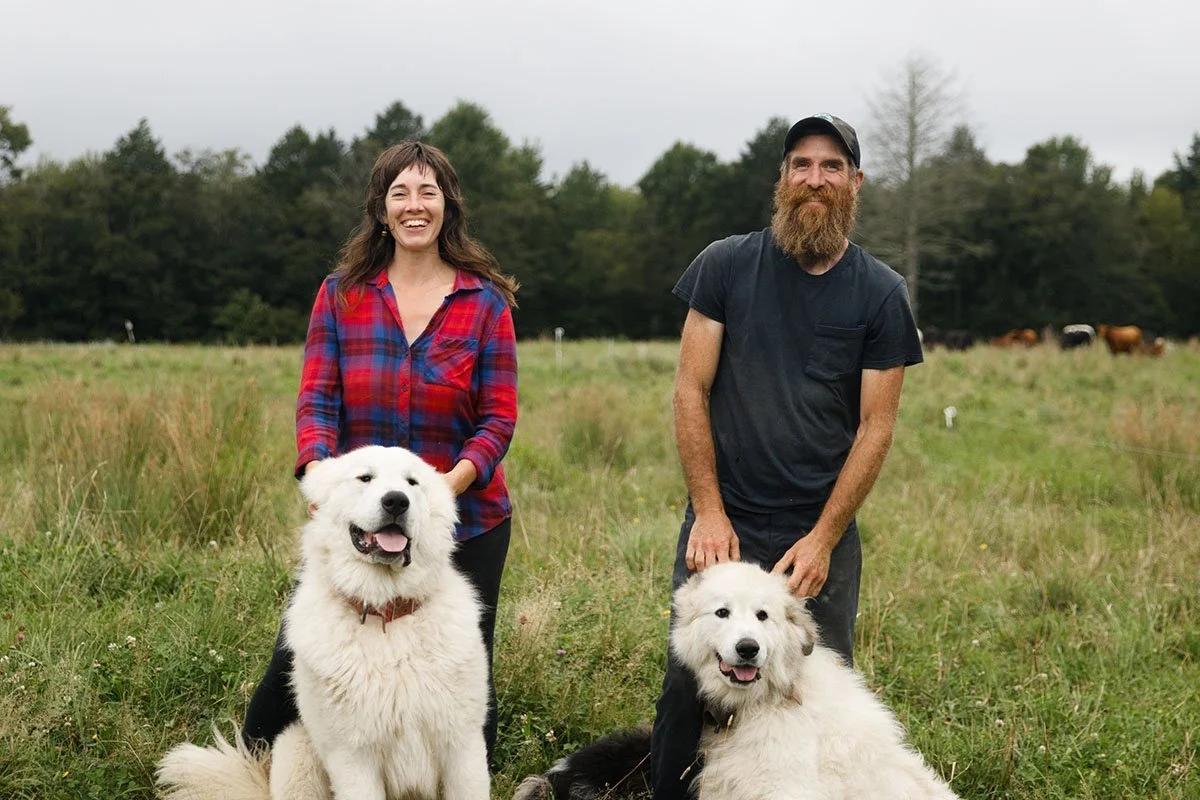Should you sell meat by the pound or by the package?
The author, Michelle Cordaro, early in her career. Michelle has worked in local food for 13 years, including several stints on regenerative farms and 8 years in nose-to-tail butchery. She also offers butcher training and consulting for small producers.
This Grapevine article was originally published in the January/February 2024 issue of APPPA’s Grit magazine.
Whether to sell by the pound or by the package is a highly debated topic in the farm community, and as more farms expand their online offerings, the topic is more important now than ever. Before the days of small farms venturing into the world of e-commerce, nearly everyone sold by the pound. Every farm store and farmers market booth was equipped with a scale to get the exact weight of each cut of meat, and then all you’d have to do was either reference your handy price list and punch some numbers in on your calculator, or hit a few buttons on your POS system (probably Square), tell your customer the total, and voila!, sales transaction complete. There was simply no need to “complicate things” by grouping cuts into weight classes and doing a bunch of math to translate your by-the-pound prices to by-the-package prices, ensuring that they would neither hurt your bottom line by rounding down, nor make your customers feel shorted by rounding up. Besides, everyone else was doing it this way, so why upset the status quo?
Fast forward to today, and suddenly it doesn’t seem so simple, because none of the mainstream platforms offer a solution for variable weight pricing when selling online (including Square, your beloved POS). So what do you do? Do you forego advancement and stick to selling in person only? Do you sell by the package online, but continue selling by the pound in person? Or do you overhaul your pricing model and take the brave leap into ditching variable weight pricing to instead sell by the package for both in person and online?
Luckily, there are now a handful of specialized platforms that accommodate variable weight pricing both online and in person, giving you the reasonable option to continue selling by the pound. But with a greater number of options comes a greater debate. So let’s hash it out: should you sell by the pound or by the package?
This page contains referral links, which are marked with an asterisk. When you click on a referral link and make a purchase, Grapevine receives a small commission at no cost to you.
Selling by the pound (aka variable weight)
Pros for selling by the pound:
Platforms Built for Farms/Food: The platforms offering variable weight pricing for online sales (including GrazeCart, Local Food Marketplace, and Barn2Door) are specialized platforms developed to cater to the needs of small and medium farms, so they have additional functionality that may fit other needs you have, in addition to variable weight.
Integrated POS Options: Most either have their own POS system that fully integrates with the online store (like GrazeCart and Barn2Door), or have a full integration with another POS system (like Local Food Marketplace’s integration with Square POS*), so you don’t have to manually reconcile inventory every week between online orders and sales at the market or farm shop.
Keep Your Current Models: You don’t have to transition to a new inventory system or overhaul your pricing model.
Stay Flexible with Processor Variations: You aren’t as reliant on your processor for consistency in cut/package size.
Customer Preferences: A segment of customers may prefer the experience of paying by the pound, even online.
Selling by the pound can be especially important for food hubs and farms who partner with other producers. David Nowacoski of Delivered Fresh uses Local Food Marketplace to aggregate products from multiple producers. Delivered Fresh now sells by the pound, but originally tried selling by the package online via Square and quickly ran into issues. David tells us, “Either the farmer wasn’t happy since we weren’t paying them for the full weight, or the consumer was unhappy because it wasn’t exactly the weight we advertised. Using exact weight seemed to fix both issues.”
If you choose to sell by the pound, you still have the option of selling certain cuts by the package. Jerica Cadman of Shady Grove Ranch, says, “GrazeCart is set up to make it really clear during shopping which items are by the pound or by the package, and it gives average pack weight and shows the calculated item total in the cart. So there seems to be very little confusion for our customers.”
Cons for selling by the pound:
Specialized Platform Pricing: The specialized online sales platforms that support variable weight sales are more expensive than their mainstream counterparts (compare a base price of $29/mo for mainstream platforms vs. $99-399/mo for specialized platforms). While they do have niche functionality you may find useful, they don’t always grow and adapt as quickly as the mainstream platforms, and often do not have as many different choices for email integrations and other features.
Transition Period: If you’re switching from years of using Square POS, the transition to a new system may be difficult.
POS Add-On Costs: If you want to sell by the pound both online and in person, and use a single system for both (for streamlined inventory), keep in mind that some specialized platforms charge a monthly fee for their POS.
Final Price Uncertainty for Customers: Your customers may experience sticker shock and/or feel it’s more difficult to budget when variable weight shopping vs. knowing how much each package will cost as they choose it. Plus, some customers may dislike not knowing exactly how much they’re going to be charged during their checkout experience.
Time-Consuming Fulfillment: Fulfillment of online orders requires an additional step for you, because you have to log into the backend of your website and update the weights for each item in each order as you pack it, rather than just packing orders and calling it a day.
Lengthier In-Person Checkout: The checkout process for in-person sales is more lengthy and cumbersome when you have to weigh each item type and then type the weight into your POS, plus the margin for error is higher.
Selling by the package
Pros of selling by the package:
Broader Platform Choices: Selling by the package opens up your options to many more e-commerce platforms, so you can focus on choosing the right platform for all of your farm needs, rather than feeling pigeon-holed into a platform because of your pricing model.
More Platform Adaptability: A wider variety of platforms may translate to more affordable, versatile, and customer-friendly options. Plus if you choose a mainstream platform like Shopify*, you can count on them to adapt and change with new sales trends more quickly. (For instance, Shopify was a leader in recurring subscriptions long before specialty platforms were able to build that functionality.)
Streamlined POS Integrations: The POS counterparts of these mainstream platforms have a longer track record and are likely more similar in look and feel to the POS you’ve been using for all these years.
Less Complicated Inventory: Tracking inventory (and its value) by the unit is simpler than having to keep track of how many pounds of meat you have sitting in your entourage of freezers. Plus, if you ever need or want to do a manual inventory count to verify what you have, you can literally just count your packages rather than having to tally up weights or bring a scale into the mix. This may also simplify your accounting and reporting, depending on your setup.
Quicker, Intuitive Checkouts: The checkout process for in-person sales is faster and less error-prone, and the checkout process for online sales will be more familiar to customers (no warnings about totals being estimates, and no delay in being charged).
Cons to selling by the package:
Adopting New Inventory Systems: If you aren’t already selling by the package, you’ll need to invest in implementing a new inventory system to organize different weight classes of cuts. Plus, you’ll need to convert your pricing system and determine a package price per weight class of each item type (for example: small, medium, and large chickens).
Changing Customer Expectations: If you have existing customers who are used to paying by the pound, it may be difficult for them to adjust. They may be sensitive to paying a little extra if they get a chicken on the lower end of the weight class.
Vulnerability to Processor Variations: The consistency in cut/package sizes from your processor will matter more, which is a variable that may be totally out of your control. Brooks Hitzfield of Seven Sons says, “[We] are now selling everything by the unit, which has been enabled only by the portion-control capabilities at the mid-scale processing facilities [we’re] partnered with.”
We often hear farms say they’re concerned that if they switch to package pricing, they’ll disappoint their customers, causing them to revolt and shop elsewhere. But in our experience, the average customer doesn’t seem overly concerned, especially not if they’re good customers. Shelly Oswald of Old Time Farm transitioned from selling by the pound to selling by the package when she switched to Shopify* in 2019. Shelly, who also happens to be an accountant with an excellent handle on the importance of inventory, says, “As I discovered more of who my customer was, I realized that those pennies didn't matter to them at all. My time was better spent cultivating a relationship with them, and on different aspects of marketing. My sales increased because I was able to focus on cultivating my customer relationships, [plus] my inventory management was more on target. And then not only that, it gave me my life back; it gave me my time back. All that time that I would spend doing something that meant absolutely nothing to customers.”
Shelly also highlighted the importance of knowing your ideal customer. “If we’re selling small-scale food, there’s no way that we can sell on price. It's just not possible to do the small scale and specialty things that we're doing and sell it on price. It's all about value. So if that's the case, and if that person is concerned about that little bit of money that would make the difference, then are they really our customers?”
Selling both by the pound and by the package
If you’re considering a dual model, where you sell by pound at your farm store or farmers markets but by the package online, consider how it will impact your business as you scale up. Using a dual pricing model system will add hours of work, including manually reconciling two sets of inventory types (plus the implications of how to organize and monitor your physical inventory), the extra time and effort it will take to make sure your books are correct, and the headache of how to train others to do it properly if you aren’t doing it yourself.
Managing Trade-offs
Ultimately, there are trade-offs to either setup. As unhelpful as it may be, there seems to be a pretty even split of farms who are firmly and passionately planted on either side of this debate. In a typical month, we hear from roughly the same number of farms who are excited to switch to package pricing for their new website vs. farms who are relieved to finally find a way to sell by the pound online.
Regardless, it’s always a good idea to talk to other farmers you respect and ask them what they do and why; perhaps you’ll find a pattern to the answers of the farmers whose farms you aspire to be like. The three main questions we urge you to ask yourself are:
What are the implications on your inventory? Choose the model that fits you best, with a streamlined inventory system that feels realistic for you to employ.
How will this affect your books/accounting? If you have an accountant, ask them what they think!
If you took variable weight out of the mix as a deciding factor for choosing an e-commerce platform, would you be going with a mainstream platform (like Shopify* or Square*) that doesn’t accommodate variable weights, or would you be going with a specialized platform (like GrazeCart, Local Food Marketplace, or Barn2Door)? If the only thing standing in the way of the platform you want is your current pricing model, then really ask yourself: is switching over as big of a deal as you’re making it out to be? With so many factors to consider when choosing a platform, taking this variable out of the mix opens up your options. (In case you missed it, check out my last article, Questions to ask when choosing a website platform.)
Example Farm Websites for Both Models
Check out some farm website examples, including those who sell by the pound (like Champlin’s Sugar Creek Farm) and those who sell by the package (like Apple Creek Farm).














